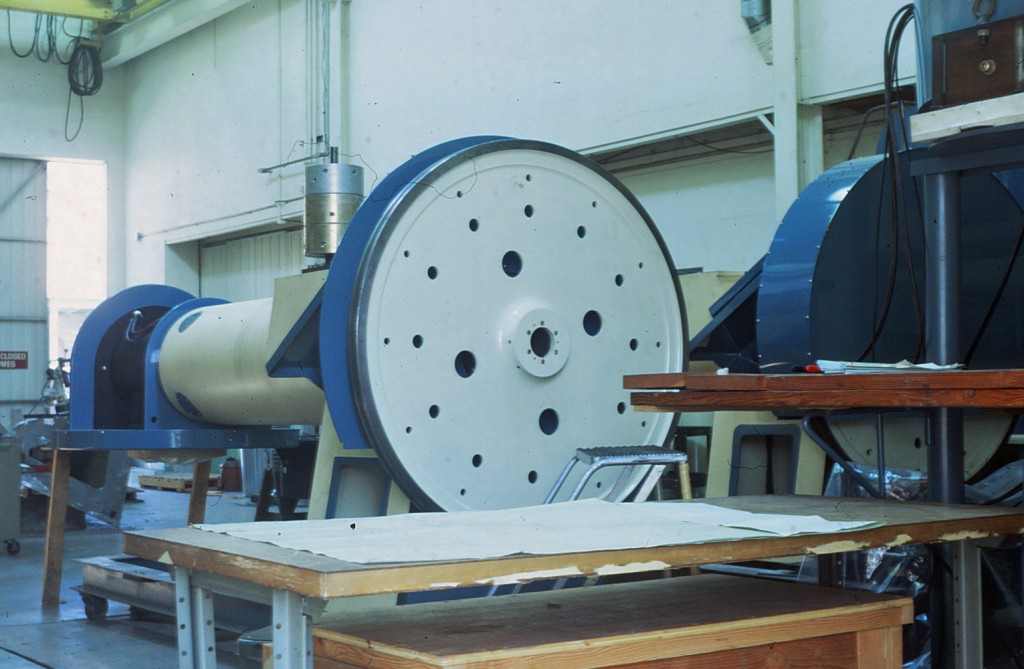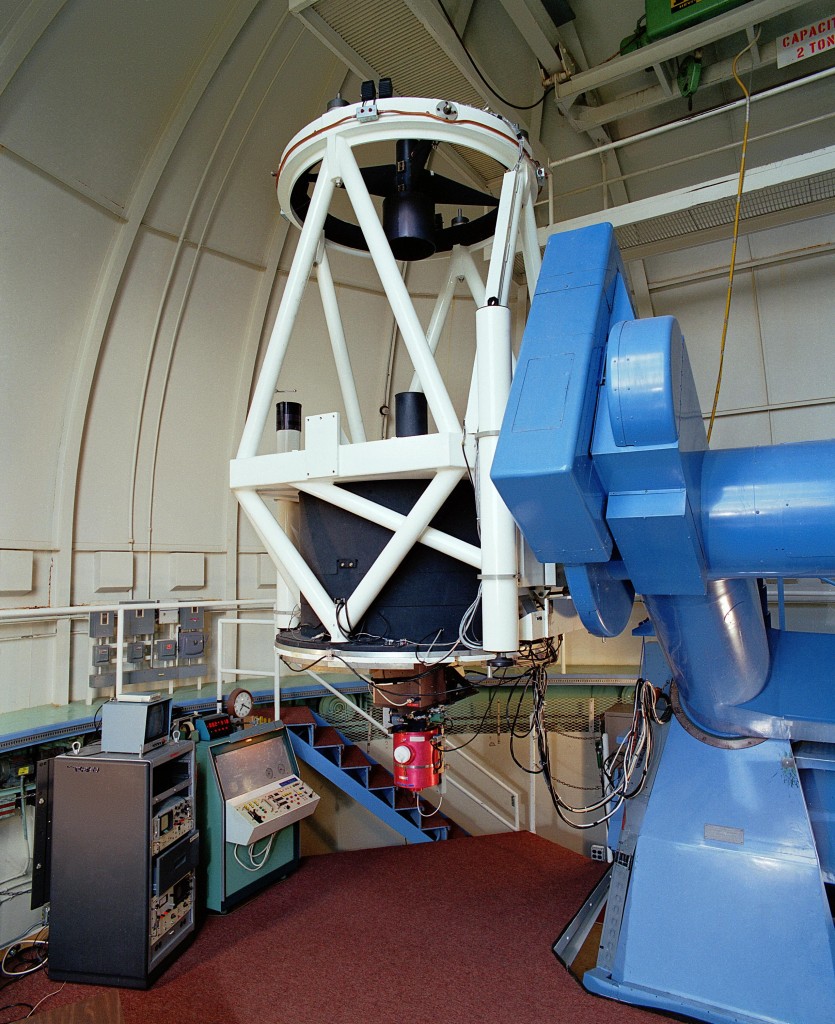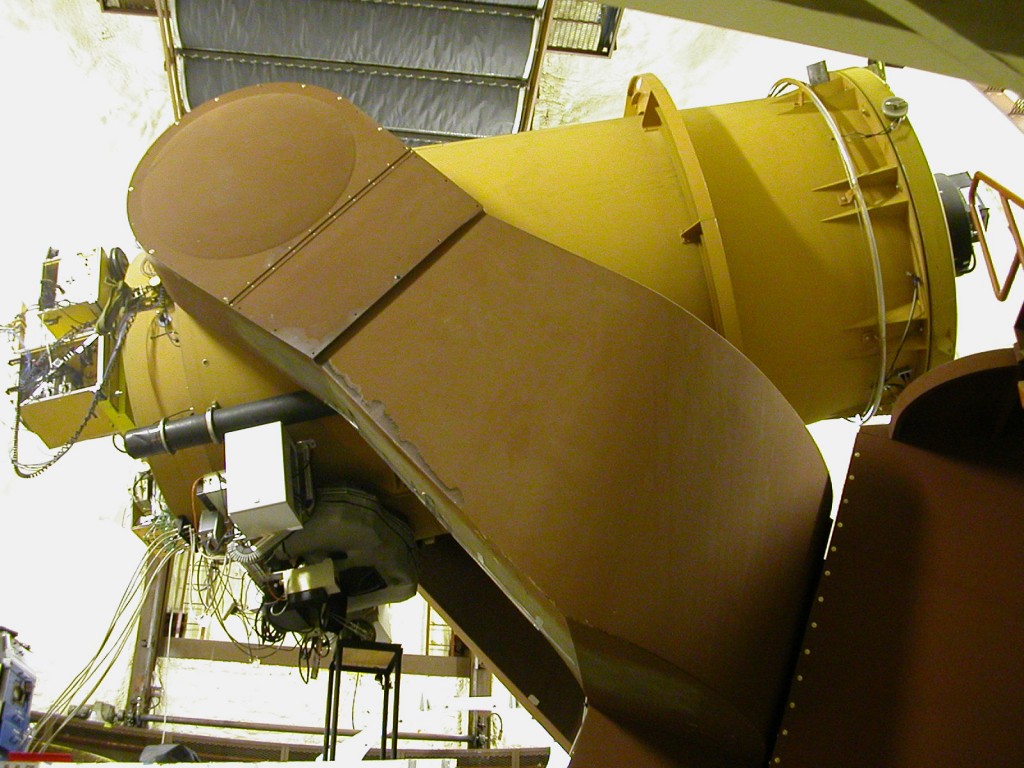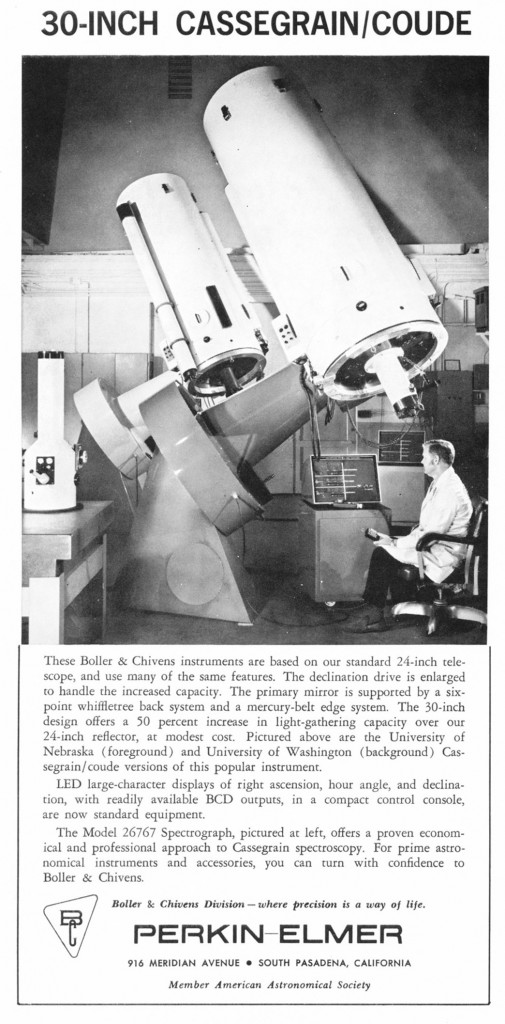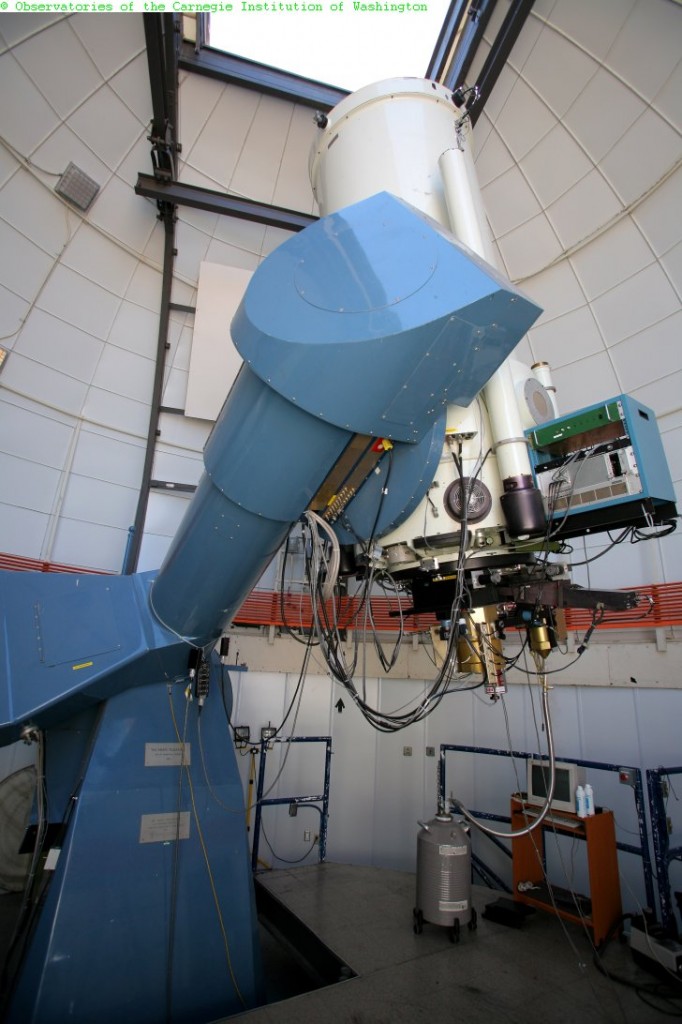This telescope has been taken over by the South Carolina State University and the university converted in to a robotically controlled telescope. To read more about this process, visit the RCT website.
87 Inch (2.15 meters) Leoncito Astronomical Complex
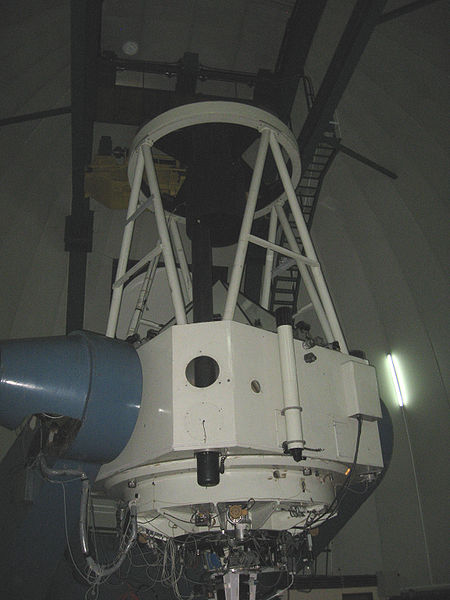 This is the 87 inch (2.15 meters) telescope built by Boller and Chivens. Located in a National Park in Argentina, the observatory where this telescope is housed is known for its lack of cloud cover and other distractions making it an ideal location for a telescope.
This is the 87 inch (2.15 meters) telescope built by Boller and Chivens. Located in a National Park in Argentina, the observatory where this telescope is housed is known for its lack of cloud cover and other distractions making it an ideal location for a telescope.
Click for more information about this observatory.
For specifications of the telescope, visit http://www.casleo.gov.ar/instrumental/js-en.php
32 inch Cassegrain Telescope, GEODS Program
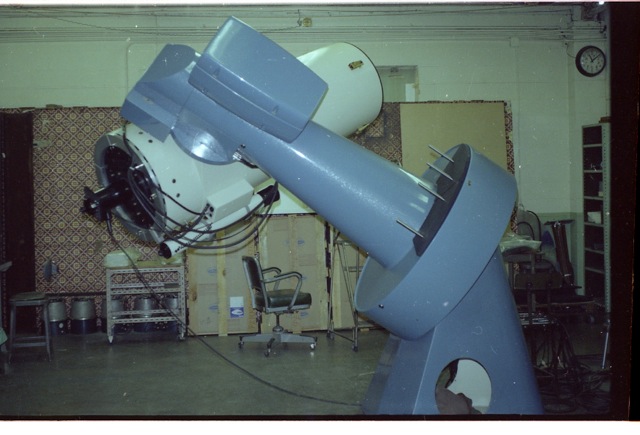 This is one of the first telescopes designed by John O’Rourke when he started at Boller and Chivens. The part he designed was the white tube behind the blue tube. The Blue Tube was standard Boller and Chivens polar and declination axis structure. The White tube houses the optics. It had a 32 inch primary mirror and all new mirror supports.
This is one of the first telescopes designed by John O’Rourke when he started at Boller and Chivens. The part he designed was the white tube behind the blue tube. The Blue Tube was standard Boller and Chivens polar and declination axis structure. The White tube houses the optics. It had a 32 inch primary mirror and all new mirror supports.
Two telescopes were built to test a new concept in tracking Soviet satellites. The telescopes would look in an area of the sky suspected to be the flight path of satellites. It would operate at sidereal rate to keep the star background fixed. The satellite would be traveling at much faster speed, and show up as a streak on the CCD sensor. Each satellite had it’s own signature so it could be identified and logged in. This telescope proved the concept and led to a world wide network of telescopes that operated throughout the cold war. The program was called GEODS. Boller and Chivens division, here in South Pasadena and Perkin Elmer, in Connecticut, combined to submit a proposal for the design and manufacture of eight GEODS Systems. We were low bidders on the first go-around but lost to Hughes on a “best and final offer”, they eliminated “overhead” and won the job.
Two telescopes (20” and 40”) were used in the Perkins Elmer proposal – no pictures, ‘top secret’.
Northwestern University Lindheimer Astrophysical Center
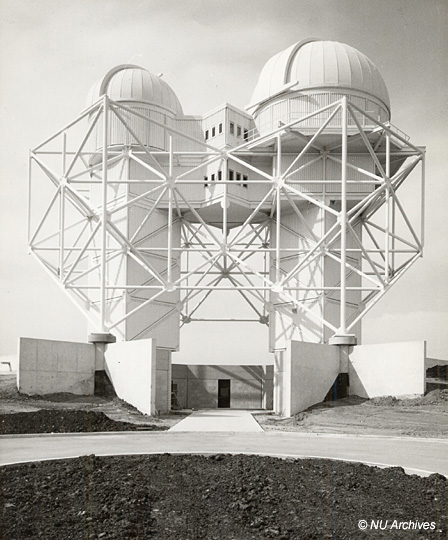 A 40 Inch telescope and a 16 Inch telescope were in installed at Lindheimer Astrophysical Center in 1967. This facility was torn down in 1995 and the telescopes were donated to Lowell Observatory.
A 40 Inch telescope and a 16 Inch telescope were in installed at Lindheimer Astrophysical Center in 1967. This facility was torn down in 1995 and the telescopes were donated to Lowell Observatory.
Information and photos are from http://ciera.northwestern.edu/Observatory/lindheimer-history.php
For additional photos and information, visit: http://www.physics.arizona.edu/~milsom/photo/states/northselected.html
88 Inch (2.24 meters) Telescope for the University of Hawaii
Boller and Chivens entered into a joint venture contract with L & F Industries to fabricate, complete the assembly and install the 88-inch telescope for the University of Hawaii on top of Mauna Kea summit on the island of Hawaii. The summit is the highest altitude of 13,796 for any telescope. Bill DeBoynton of Boller and Chivens supervised a crew from L & F Industries for the installation of the telescope. This was the first telescope to be installed on Mauna Kea. Since no living quarters on the mountain, every day the installation crew had to travel to the mountain top on an almost impassible construction road and return to sea level. No one could ever had time get acclimated at this high altitude. Accommodations for research astronomers are located at the Onizuka Center for International Astronomy (often called Hale Pohaku), 7 miles by unpaved steep road below the summit at 9300 feet (2835meters). Scientists often stay at Hale Phaku for 8 hours or more before spending a full night at observatories on the summit, with some telescopes requiring observers to spend one full night at Hale Pohaku before working at the summit.

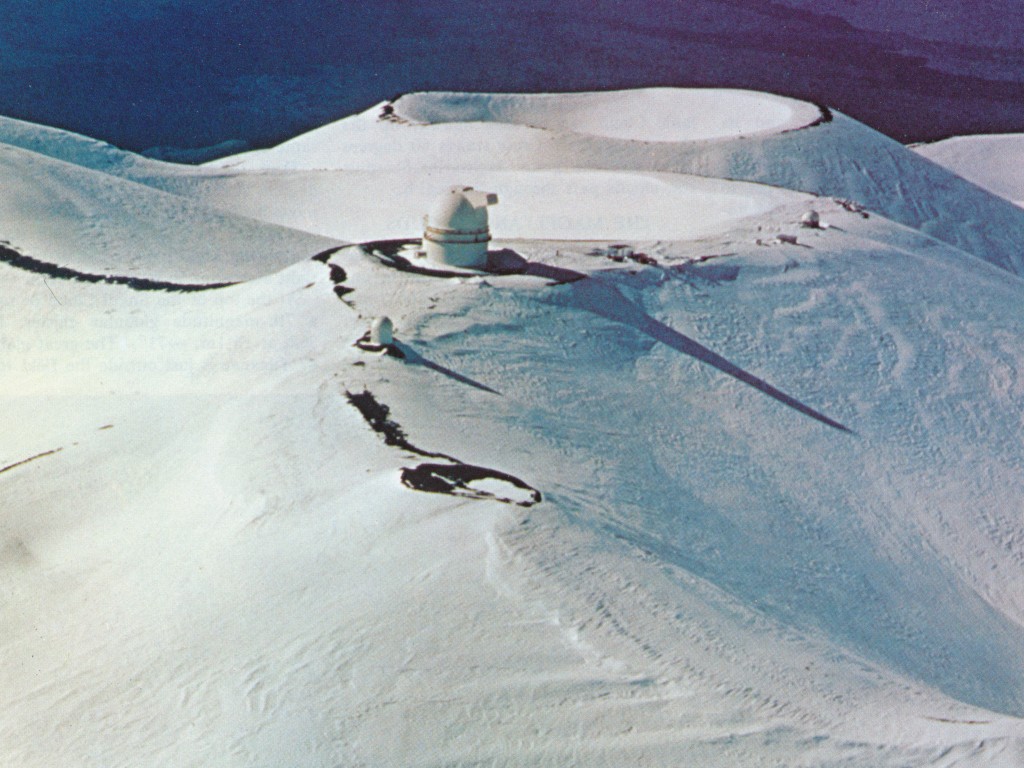
 from University of Hawaii website
from University of Hawaii website
For more about this telescope, visit the University of Hawaii website.
62 Inch (1.6 meters) Telescope for University of Montréal, Quebec, Canada
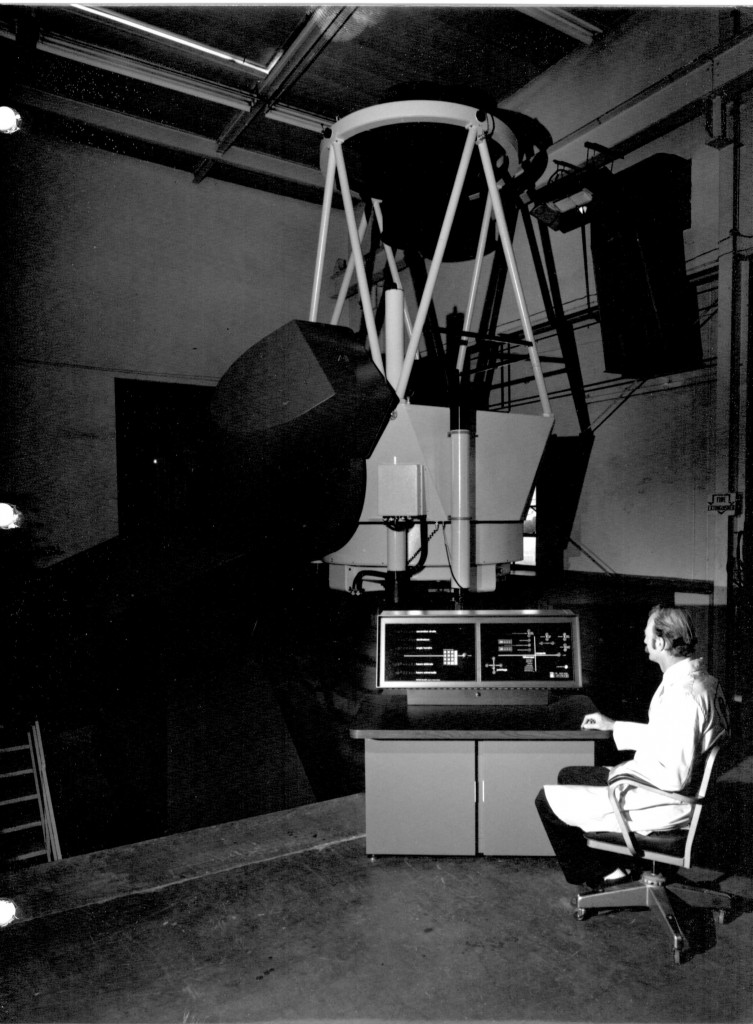 Bill De Boynton shown in the picture taken in the Boller & Chivens High Bay Assembly room in South Pasadena.
Bill De Boynton shown in the picture taken in the Boller & Chivens High Bay Assembly room in South Pasadena.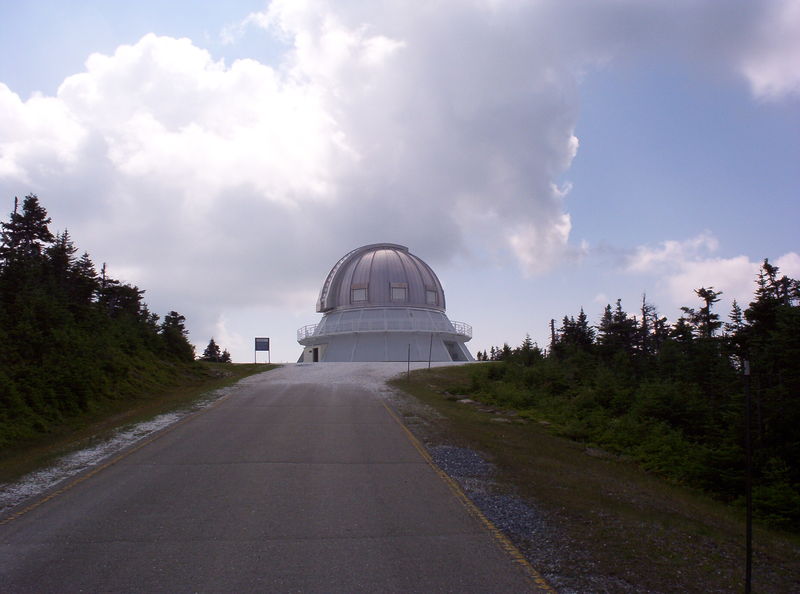
More on this telescope: http://www.dfmengineering.com/news_mt_megantic.html
36 Inch (.91 meter) Anderson Peak Modifications
 Anderson Peak is about 110 miles north of Vandenberg AFB in the Big Sur area – Boller and Chivens, in conjunction with Perkin-Elmer, Costa Mesa, were contracted to rework the optics of the 36 inch telescope on Anderson Peak. Part of the task was to design, manufacture and install a series of relay optics which were turret mounted and permitted rapid change of the magnification of the telescope while it took movies of missile launches from Vandenberg Air Force Base. Juan Rayces designed the relay optics; Larry Steimle assembled them and tested them in the motorized turret system mounted on the main telescope tube. Then Larry Steimle went to Anderson Peak to align and test the relay optics system.
Anderson Peak is about 110 miles north of Vandenberg AFB in the Big Sur area – Boller and Chivens, in conjunction with Perkin-Elmer, Costa Mesa, were contracted to rework the optics of the 36 inch telescope on Anderson Peak. Part of the task was to design, manufacture and install a series of relay optics which were turret mounted and permitted rapid change of the magnification of the telescope while it took movies of missile launches from Vandenberg Air Force Base. Juan Rayces designed the relay optics; Larry Steimle assembled them and tested them in the motorized turret system mounted on the main telescope tube. Then Larry Steimle went to Anderson Peak to align and test the relay optics system.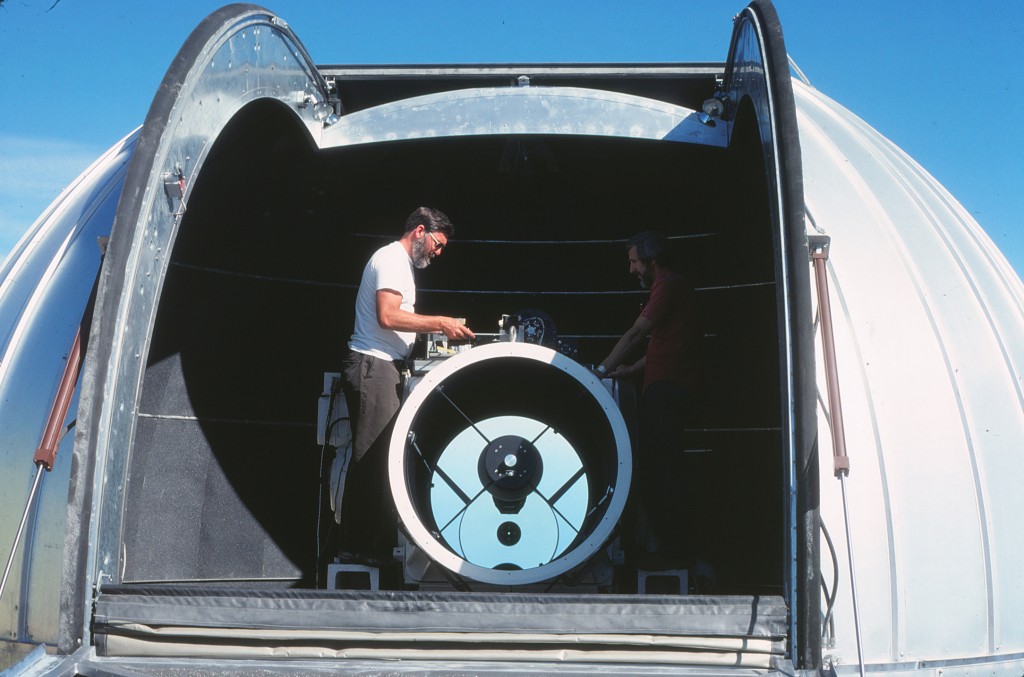
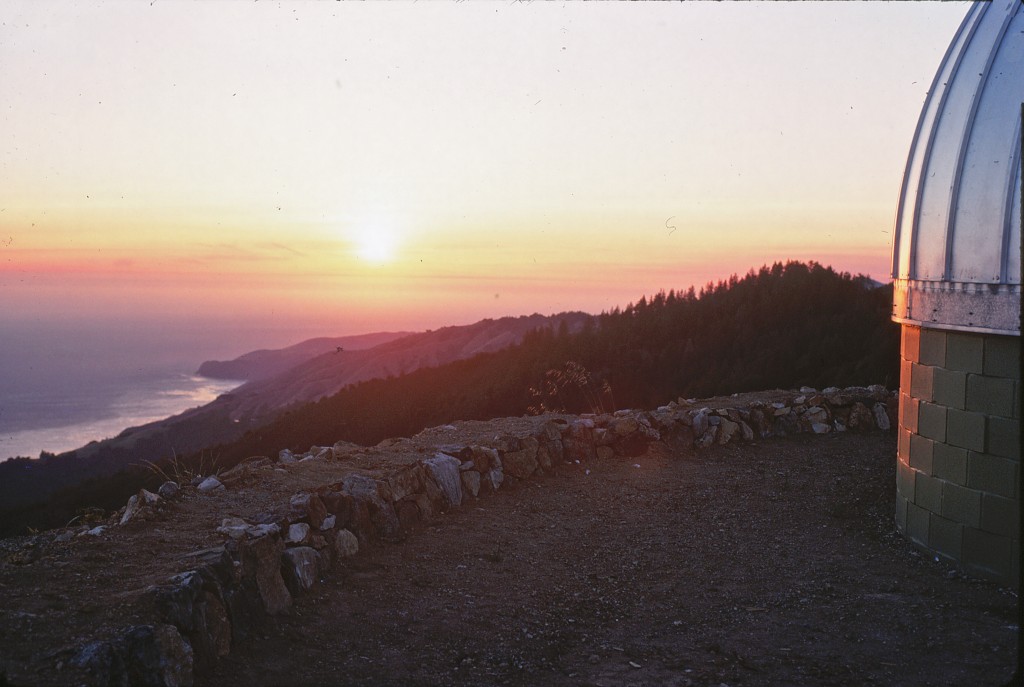


30 Inch (.76 meters) Telescope for University of Washington
 This telescope is located at the Manastash Ridge Observatory run by the University of Washington. It is one of the few that departed from the standard Boller and Chivens color scheme of blue and white. The university wanted it painted in their school colors. For more information, visit the Manastash Ridge Observatory website.
This telescope is located at the Manastash Ridge Observatory run by the University of Washington. It is one of the few that departed from the standard Boller and Chivens color scheme of blue and white. The university wanted it painted in their school colors. For more information, visit the Manastash Ridge Observatory website.
100 Inch (2.54 meters) Telescope for Carnegie Institute, Las Campanas Observatory, Chile
Boller and Chivens entered into a joint venture contract with L and F Industries to fabricate and complete the assembly of the 2.54 meter (100-inch) Irénée du Pont Telescope at the Las Campanas Observatory, Chile.


The 2.54 meter (100-inch) Irénée du Pont telescope has been in operation at Las Campanas Observatory since 1977. The telescope was a result of a gift in 1970 from Mr. and Mrs. Crawford H. Greenewalt to the Carnegie Institution of Washington, which supplied supplemental funds. Basic considerations in designing the telescope were that it is as versatile, reliable, and convenient as possible for its size, and that it has excellent optical performance to match the natural observing conditions offered by the site. Because there were no plans at the time to build companion instruments, such as a large Schmidt for wide-angle surveys, the Du Pont telescope was designed to have an exceptionally wide field for direct photography.
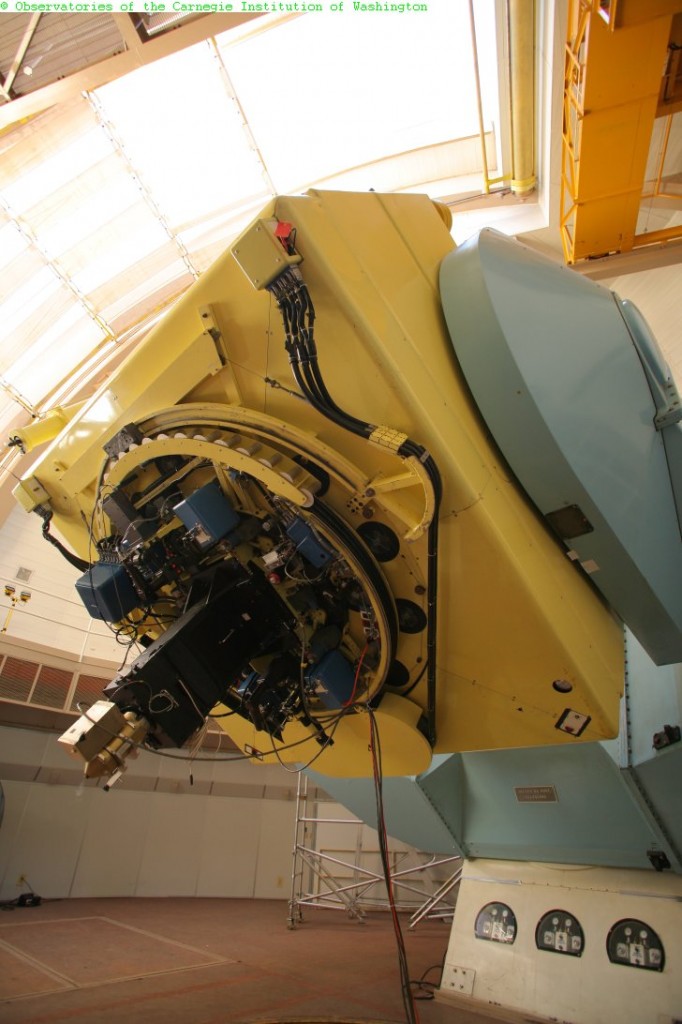
 For more information on this project, visit the Los Campanas Observatory website.
For more information on this project, visit the Los Campanas Observatory website.
40 Inch (1.02 meters) Telescope for Carnegie Institute, Las Campanas Observatory, Chile
Installed in 1971, this telescope was named the Henrietta Swope telescope in honor of a Carnegie astronomer.
In mid-2000, the control system of the Swope telescope (C40) was upgraded to a computer-controlled TCS. Since this system is easy to use, a night assistant is no longer provided to operate the telescope.
Visit the Las Campanas Observatory website for more information about this telescope.